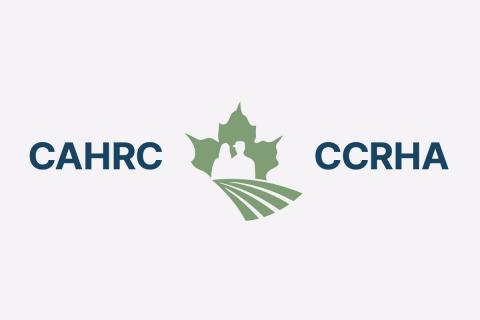The Canadian Agricultural Human Resource Council (CAHRC) is helping address labour shortages in agriculture, particularly related to underrepresented groups like young Canadians.
CAHRC’s Growing Opportunities Student Wage Placement Program (SWPP) provides financial support to AG businesses to hire post-secondary students. Although the program has only been in place since the fall of 2021, 155 employers have benefited from more than 350 student placements. And CAHRC is hoping to continue to build on that momentum.
We talked with Tanya Hsu, Talent Acquisition Coordinator with Trouw Nutrition Canada, an animal feed manufacturing company, about her experiences with SWPP. Trouw took advantage of the wage subsidy program in 2022 and is planning to do so again this year.
Q: How did you find out about the wage subsidy program?
A: I was tasked to look into student subsidies, so I searched for both provincial and federal opportunities, and found CAHRC’s program. Since we operate across Canada, what made this subsidy so attractive was that you can apply for multi-province subsidies. Because CAHRC covers the entire country, it saved us a lot of time and effort applying for independent provincial programs.
Q: What labour gaps did you have that the wage subsidy help fill?
A: Sometimes we can find locals who live in the area who come from an agriculture background. But many of our locations are very remote and people are hard to find. This program has the potential to help us hire students for a range of jobs: lab technicians, production assistants, financial administrators, customer service reps, retail clerks and warehouse personnel.
Q: Can you tell us about the students you’ve hired?
In 2022, we hired two students from a financial program in Manitoba. In 2023 we are planning to bring on 10+ students, mostly lab students studying in Quebec who will work with us on feed formulations. Two of the students we hired in 2022 through the subsidy program are now permanent employees of Trouw Nutrition.
Q: How did you find students to fill the positions?
We’ve found them in various ways. CAHRC has made post-secondary institutions aware of the wage subsidy program to help you find the students you need. That’s a good option, particularly if there are colleges and universities that have programs related to the particular skills you’re needing. We’ve also attended career fairs, posted jobs on our company website, as well as on Indeed.
Q. Why were you interested in hiring students?
A: We’re looking to the future. This program is introducing a new generation to the field of agriculture to be able to take over when older generations retire. It initially requires a lot of close supervision, but we’re hoping to increase interest in the animal nutrition sector. As a business, we’re competing with other companies and want to get a leg up – and enthusiastic young professionals are going to give us that advantage.
Q: How do you think students benefit?
Well, it’s a win-win situation for us and for the students. Instead of hiring someone with brand new credentials with little or no work experience, we’re giving them the opportunity to apply the knowledge they learned from their education and gain the experience they need. We also don’t pay just minimum wage; we pay what the market requires. This makes it possible for them to earn money during the school year, as well as gain insights into their field of study. What we do in our operations in not necessarily what you study in class. It’s hands-on, so students get to explore what it’s all about before they commit to it as a career.
Q: Can you tell us about CAHRC’s support over the duration of the project?
A: The people at CAHRC were very helpful in explaining the process and responded quickly to my questions – they were always right there willing to help us by phone or email. And, once we submitted all the documents at the end of the work term, we were paid right way. I give them kudos for that.
Q: How do you think the program benefits the agriculture industry as a whole?
A: We need people to work in agriculture, so the future of the industry depends on bringing the next generation into the field. We also need a reliable source of labour to continue to provide animal products as food for people to eat. These sorts of subsidies are one way to ensure that happens. All agriculture employers should consider taking advantage of the wage subsidy program. It’s a terrific resource – and we’re grateful for the support.
For more information on SWPP and how to apply, contact Kelsey Courtney, Program Manager at kcourtney@cahrc-ccrha.ca.
